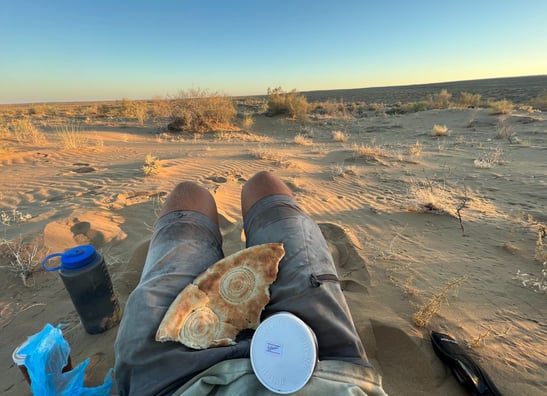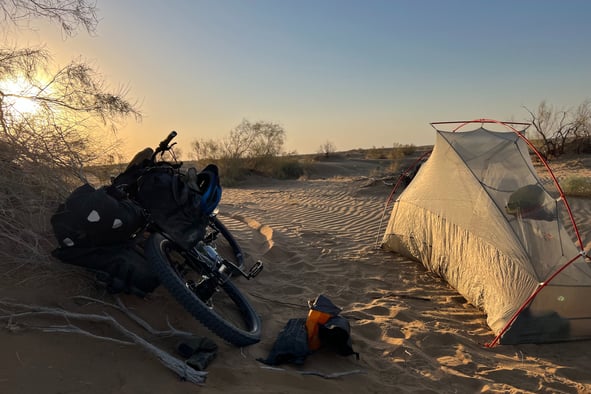Desert cities of Uzbekistan - Khiva to Urgench
Arrival in Central Asia
12/9/20234 min read

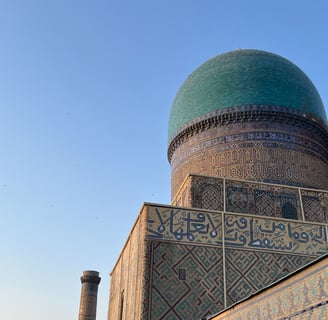
Uzbekistan
The most complicated part of my travel in Central Asia was getting there in the first place. With a route through Russia an unsavoury bet, Turkmenistan closed and land borders shut between Georgia and neighbouring Azerbaijan, options for an overland route to the roof of the world were limited.
With an inevitable flight looming I took the opportunity to skip a portion of Kazakhstan and fly directly into Uzbekistan, optimistically hoping to reach the Tajik mountains before the winter closed in. Looking at a map, the best location seemed to be the city of Urgench, and three flights and any intentions of calling the trip carbon-neutral scuppered later, I arrived Uzbekistan.
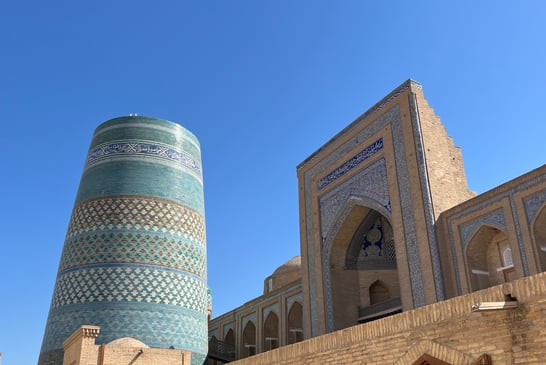

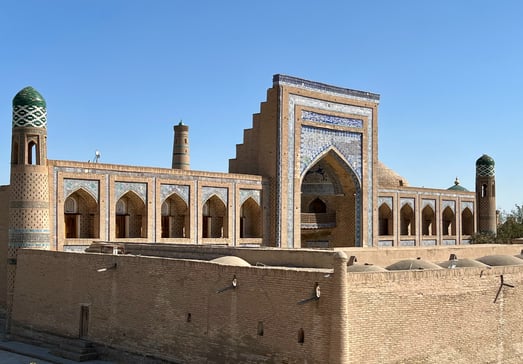

The first major stop was the city of Khiva, a significant feature on the Silk Road and one of many previous Central Asian hubs of medicine and astronomy. It enjoyed a pivotal role in the Golden Age for 500 years before Genghis Khan arrived in the 13th century and, true to form, raised the city to the ground.
Deep, blue-coloured tiles line the tops of minarets protruding over the 10 metre city walls, and visitors that pass through its gates are met with a variety of mausoleums, madrasahs, and palaces, each adorned with intricate, symmetrical patterns that line the delicate brickwork.
While most of the buildings have been either built or refurbished in the last few hundred years, architects have continued in the same style for centuries, deliberately uninfluenced by other designs. The market streets now funnel visitors between sellers of hats, scarves, and keyrings that can take away from the mystique of the place, but walking past the battlements of the old city wall at dusk it's just about possible to imagine a scene that's remained unchanged in the last thousand years.
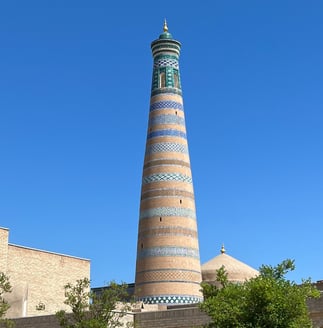

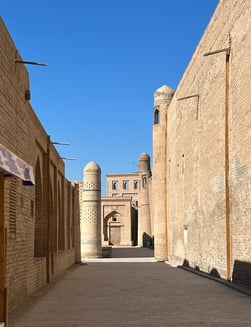

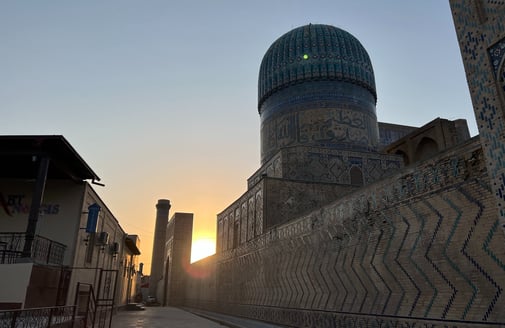

Between Khiva and Urgench, my next stop, is a 400km ribbon of flat, shadeless tarmac that stretches east across the desert. While the majority of the route is featureless there are several opportunities to resupply, usually in the form of a petrol station or a 'Chayhana' - small restaurants that occasionally offer somewhere to sleep.
It was my first time riding through a desert and the novelty of this experience slightly outweighed the 38°C heat. Once my body adapted it did become bearable, though, helped by a combination of hydration, layers of clothing, and the counter-intuitive approach of cycling during the hottest parts of the day with the breeze generated offering more relief than simply stopping and baking under the sky.
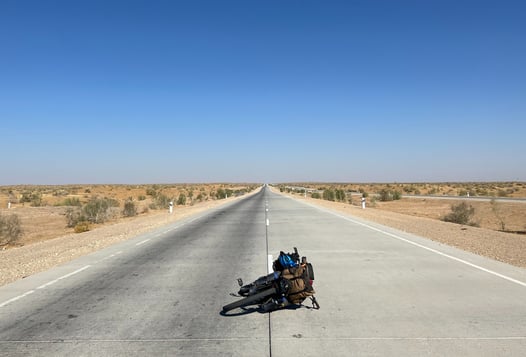

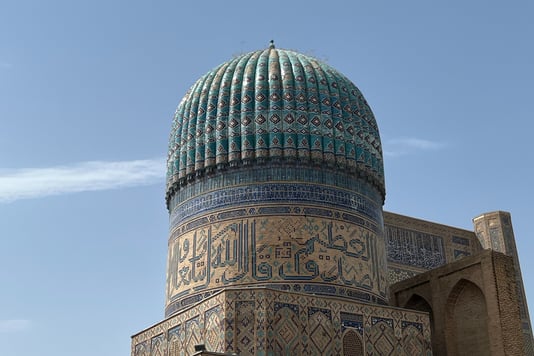

Being unable to communicate with restaurant owners often results in a tour of the kitchen in order to physically select what you'd like. Something that is a bit of a dice roll depending on your stomach for less-than-sanitary conditions, however does make for some interesting insights. It was in this scenario that I was taken to a back room and shown a large tank holding around a foot of water, home to about a dozen carp-like fish that formed the entirety of the menu.
With some questions answered as to how so many shops in the desert were able to boast having fresh fish, I tucked in to some fried carp, ketchup, and stale flatbread. Of the many, many reasons to visit Central Asia, I don't think it is unfair to say that cuisine is unlikely to be one of them.
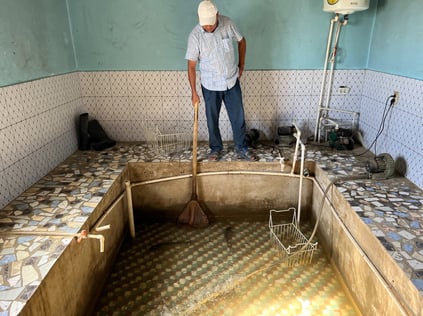

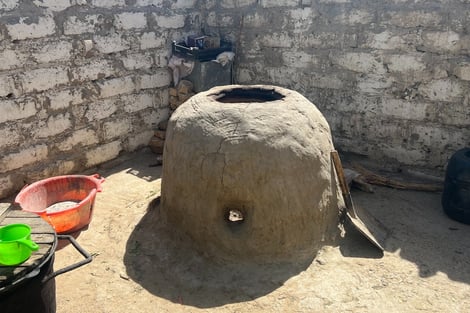

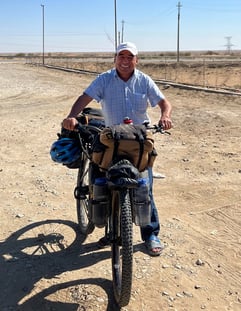

That said, Uzbekistan is home to a delicious selection of bread, often cooked on the inside of round clay ovens called a tandir (pictured above). They're also used to cook samsa, delicious parcels of baked bread with meat and/or vegetables that made a welcome change to the slow death-by-fish I was experiencing at the time. Spotting a tandir outside a restaurant was a sure way to raise morale.
The most enjoyable part of the day was early evening, where the heat tapered to a gentle warm breeze and the sun dipped low enough to paint the horizon in purple and orange. Camped often on the other side of a sand dune only about 20m from the road it wasn't hard to imagine I was the only person in the world.
After a criminally beige dinner of bread, nutella, and biscuits, I slept shortly after the sun went down, snatching glimpses of the Milky Way through the netting of my tent. Nature's alarm clock, i.e a 45 degree sleeping compartment, deterred any plans of a lie in, and I packed up my kit under a rising sun to continue riding east.
